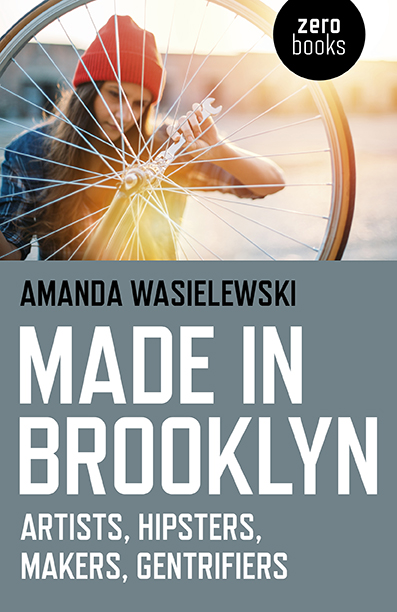Made in Brooklyn
The artist is dead. There are only makers now.

The artist is dead. There are only makers now.
The artist is dead. There are only makers now.
Business aspects, Popular culture, Urban
Made in Brooklyn is a belated critique of the Maker Movement: from its origins in the nineteenth century to its impact on labor and its entanglement in the neoliberal economic model of the tech industry. Part history, part ethnography, Made in Brooklyn provides a unified analysis of how the tech industry has infiltrated artistic practice and urban space.
Click on the circles below to see more reviews
This was a great book. Highly researched, Made in Brooklyn offers a perspective on how and why makers culture took over bad areas of NY (and other cities in the world - the motives seem applicable in most big cities with hip neighbourhoods) and transformed them into middle-class, eclectic, gentrified areas. I'll recommend this book to all of my friends who believe that buying triple organic vegetables is better than (average) organic products from local markets. ~ Silvia Patriche , NetGalley
Anybody interested in artist-led urban gentrification in general, and the poster child for this process - Brooklyn, NYC - should read this book. Combining journalistic, ethnographic and academic perspectives, the book is an engaging, provocative, and pleasurable. Read it and you will see your own city in new ways. ~ Lev Manovich
Since the 19th century Paris prototype, the bohemian romance of young artists navigating the perils and possibilities of the great metropolis has proven both remarkably durable and highly dynamic. In this excellent book, Amanda Wasielewski updates bohemia for the 21st century, via the notorious art scene taking shape against the jagged backdrop of a rapidly changing Brooklyn. Digging beneath the facile and pejorative “hipster” stereotype that dogs Millennial artists, she depicts how young creatives operate in the context of hyper-gentrification and an emergent “gig” economy shaped in equal parts by new media and contingent labor. Ever resourceful, these digitally savvy and increasingly entrepreneurial artists invent new styles of self-expression and self-promotion, while struggling, not always successfully, to preserve their autonomy. Avoiding the traps of either utopian boosterism or cynical critique, Wasielewski gifts us with a measured, analytically incisive and vividly rendered account of a major new trends, in both cities and art. ~ Richard Lloyd, author of Neo-Bohemia: Art and Commerce in the Postindustrial City